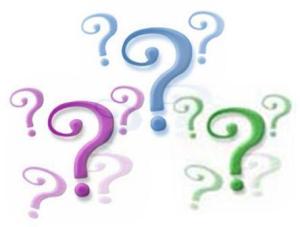
Some people are never satisfied with the status quo—especially when it comes to someone else’s life. They’re quite content where they are, thank-you-very-much. But you, you should be out there changing the world! Or at least your own corner of it.
I’d been dating the same man for two years (my husband now), when the difficult questions began. People would discover we’d been dating a while, would nod and smile, and then ask, “So, when are ya gonna get engaged?” The first time this happened, I blushed furiously, laughed, and hoped my boyfriend hadn’t heard. My choices of retaliation were limited. I couldn’t publicly strangle this person and claim insanity later. There was an expiration date on dating? Nobody had shared this privileged information with me. I hadn’t read the manual.
After hearing that question for four years, my boyfriend buckled under the pressure. We got engaged. When “they” heard of this new development, the question became, “So, when are ya gonna get married?” For the next ten months, I heard this question over and over while I ate, breathed, slept, and dreamed the planning of my wedding. I thought “they” would be happy when the magical day arrived.
I was wrong. Before long a new question started: “So, when are ya gonna have a baby?” When I expressed no interest in having children, it was as though I’d claimed to be Elvis reincarnated— raised eyebrows, overly bright smiles, and quiet whispers reserved for the mentally unbalanced. “They” had never heard such a thing. Had I buried my maternal instincts under a rock? Maybe I was deficient and didn’t have any.
That was only the beginning. “They” devised tests (aka suggestions) for me, hoping I’d declare my mission in life was to bear dozens of children. I was told, “You should see Jane’s new baby,” or “Why don’t you hold Cheryl’s new baby so you can practice?” or “Go stand next to Tammy and Jennifer—they’re both pregnant.” As if something like that was contagious. (Names have been changed to protect the pregnant.)
It was five years before a maternal instinct hit me. They were necessary years, because now I was ready to have children, rather than feeling like I had to. In five and a half years, I gave birth to two beautiful and gifted girls (no bias here), and closed up shop. Still, I wondered how many other questions “they” had up their sleeve. Would “they” ever be content, or would it be a constant stream of questions? I could only imagine it: “When are your kids gonna get married?” “When are you gonna have grandchildren?” “When are you gonna retire?” What could be the last question? How about “When are you gonna die?”
To my relief, I haven’t heard any of the former imagined questions. Because God’s calling the shots, I don’t have any answers for these kinds of life-changing questions. After forty-five years, I’ve learned I’m not in control and I’m okay with that. His plans are bigger, better, and more phenomenal than anything I’d dream up. So when we talk, I don’t tell Him how to fix my problems. He’s got me covered.





